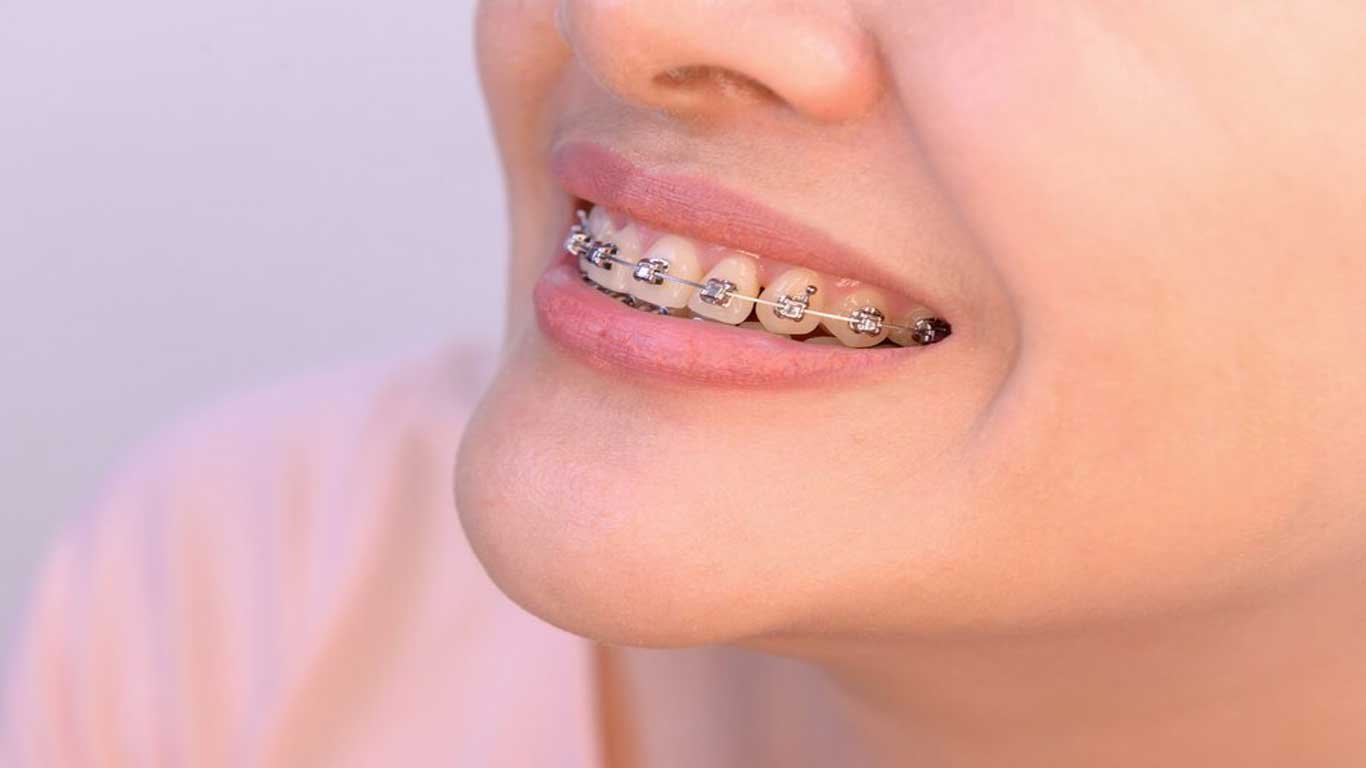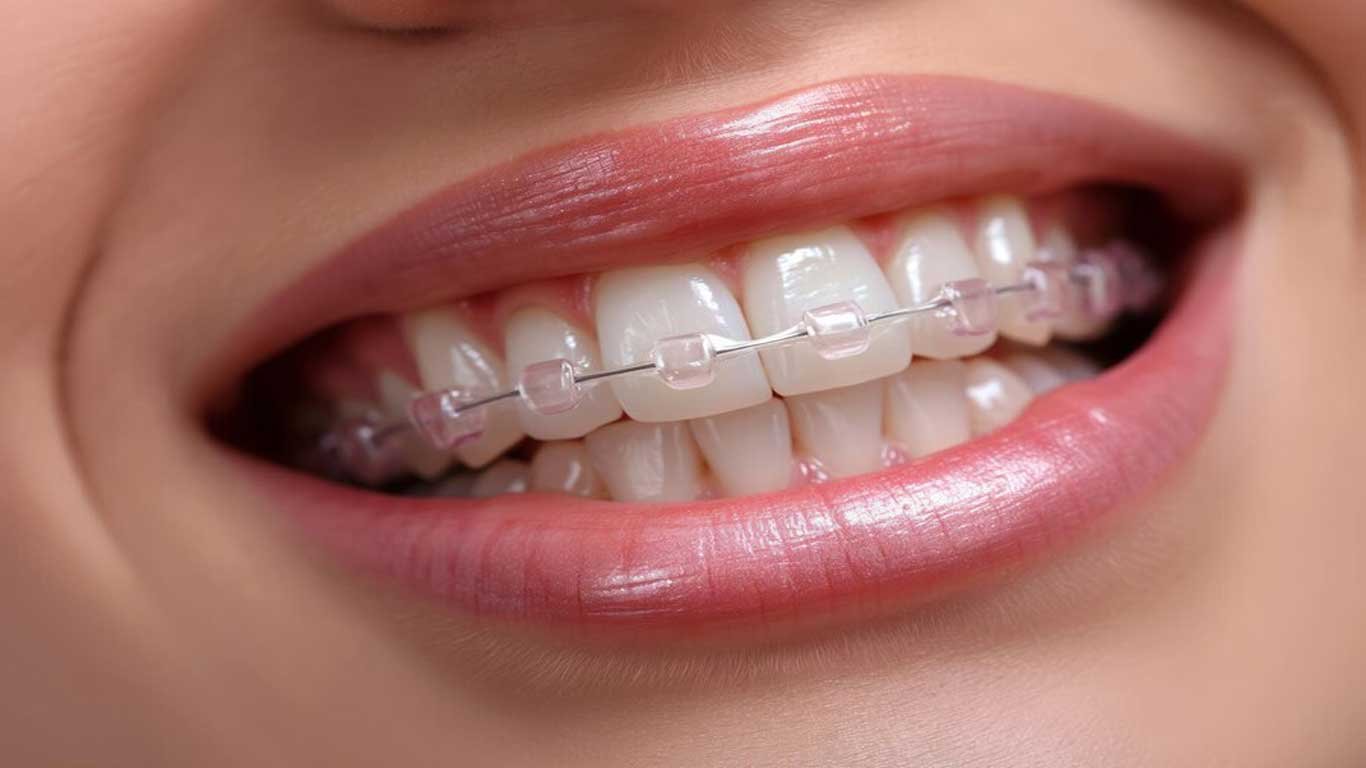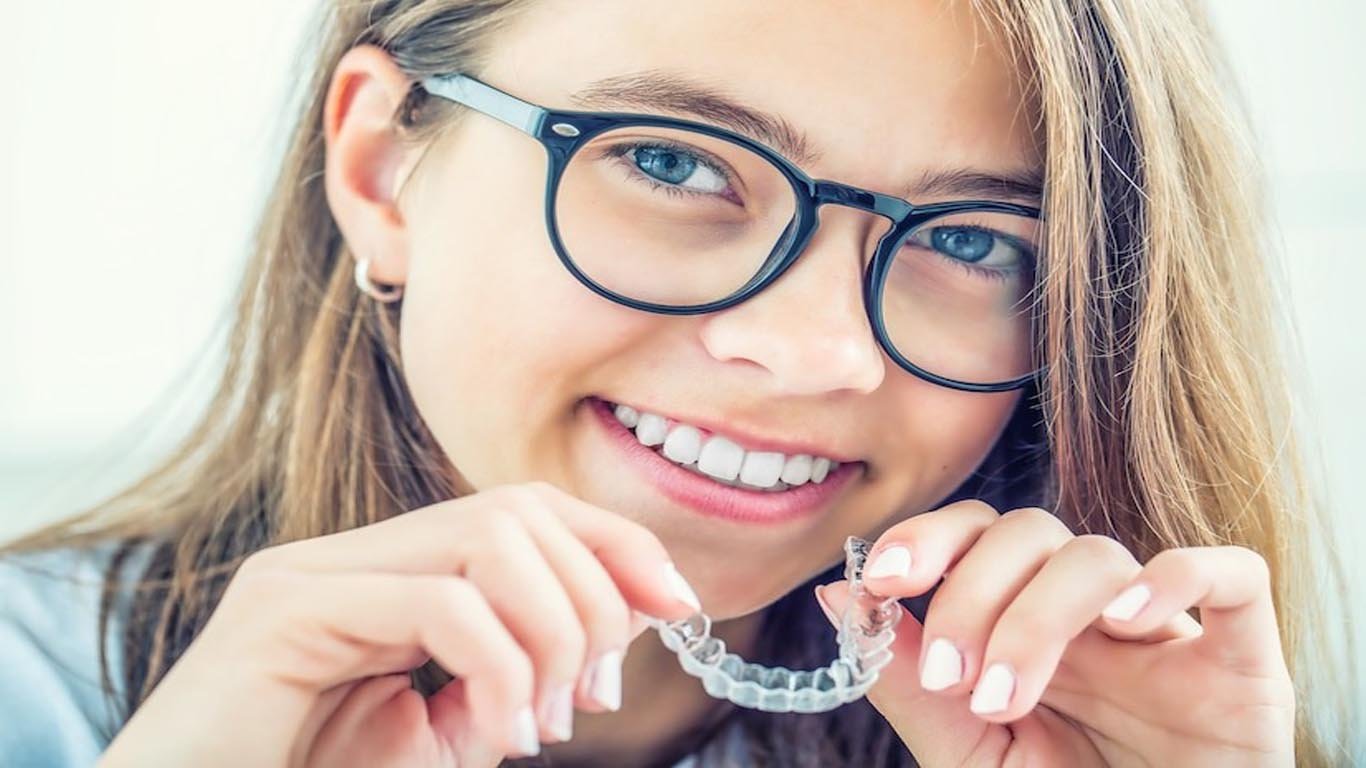Different Types of Braces
When it comes to orthodontic treatment, braces play a significant role in straightening teeth and achieving a beautiful smile. There are different types of braces available, including traditional metal braces, ceramic braces, lingual braces, and clear aligners. Each type of them offers unique advantages and considerations.
Traditional braces consist of metal brackets and wires, while ceramic braces blend in with the natural tooth color. Lingual braces are placed on the backside of the teeth, making them virtually invisible. Clear aligners, like Invisalign, are removable trays that gradually move the teeth into alignment.
Understanding the different types of braces can help you make an informed decision about the most suitable option for your orthodontic needs.
Different Types of Braces for Teeth
Here, we walk through the 5 top braces that orthodontists use frequently.
1. Traditional metal braces
Orthodontic braces, commonly known as dental braces, have been a trusted and effective treatment option for correcting various teeth alignment issues. Among the different types of braces, metal braces stand out as the most traditional and widely used option.
Metal braces consist of stainless steel brackets and wires that are carefully placed on the teeth to exert pressure and gradually move them into the desired positions. These braces are highly durable and can effectively address a range of orthodontic concerns, including overcrowding, gaps, and misalignments.
Advantages:
- Highly effective for a wide range of alignment issues.
- Cost-effective compared to other options.
- Durable and can withstand significant pressure for precise adjustments.
Considerations:
- Metal brackets and wires are visible, which some patients may find less aesthetically pleasing.
- Regular adjustments are required to ensure optimal tooth movement.

2. Ceramic braces
Ceramic braces are a popular alternative to traditional metal braces for individuals seeking a more discreet orthodontic treatment option. These braces are made of clear or tooth-colored ceramic materials that blend in with the natural color of the teeth, making them less noticeable compared to metal braces. Ceramic braces offer the same effectiveness and benefits as other types of orthodontic braces in terms of correcting teeth alignment issues.
Read More: Braces Diet
Advantages:
- Less noticeable than traditional metal braces.
- Effective for treating a variety of orthodontic issues.
Considerations:
- Slightly more fragile than metal braces.
- Can be more expensive than metal braces.
- Regular cleaning is required to prevent staining over time.

3. Lingual braces
Lingual braces are a type of teeth braces that are placed on the back surface of the teeth, making them virtually invisible from the front. Unlike traditional braces and ceramic braces, lingual braces provide a discreet treatment option for individuals who wish to straighten their teeth without the braces being visible.
These braces work similarly to other types of orthodontic braces, applying gentle and continuous pressure to gradually shift the teeth into their desired positions. The main difference is that lingual braces are custom-made to fit the contours of the back of the teeth, allowing for a comfortable and precise treatment experience.
Advantages:
- Completely hidden from view.
- Effective for complex dental issues, similar to traditional braces.
Considerations:
- May take some time to adjust to, especially when speaking.
- Requires a skilled orthodontist for custom fitting and adjustments.
- Can be more expensive than other types of braces.
Read More: Bracket Teeth Braces
4. Clear aligners
Clear aligners are a popular alternative to traditional orthodontic braces. They are a type of orthodontic treatment that utilizes a series of clear, removable aligners to gradually straighten teeth. Unlike traditional braces that use brackets and wires, clear aligners are made of transparent plastic material, making them virtually invisible when worn.
These aligners are custom-made to fit snugly over the teeth and apply gentle pressure to shift them into the desired position. Each set of aligners is worn for a specific period, typically around two weeks, before being replaced with the next set in the series. This process continues until the teeth have achieved the desired alignment.
Read More: Straight Talk: Metal Mouth Braces
Advantages:
- Nearly invisible, making them ideal for adults and teens who want a discreet treatment.
- Removable, allowing for better oral hygiene and more dietary freedom.
- Custom-made for each patient, ensuring a snug fit and effective treatment.
Considerations:
- May not be suitable for severe dental issues or complex movements.
- Requires discipline to wear the aligners for 20–22 hours per day.
- Some patients may experience discomfort from the aligners, particularly during transitions to a new set.

5. Damon Braces
Damon braces are a type of orthodontic braces that offer a unique and innovative approach to teeth straightening. They fall under the category of self-ligating braces, which means they use a specialized mechanism to hold the archwire in place without the need for elastic or metal ties.
Unlike traditional braces that require frequent adjustments and tightening, Damon braces utilize a self-ligating system that allows for more efficient and comfortable tooth movement. The braces feature a sliding door or clip mechanism that holds the archwire, allowing it to move freely and applying consistent, gentle forces to guide the teeth into proper alignment.
One of the key benefits of Damon braces is their ability to minimize the need for tooth extractions in certain cases. The advanced design and technology of Damon braces can create more space in the dental arch, which may reduce the need for removing healthy teeth to make room for crowded or misaligned teeth.
Damon braces are available in both metal and clear versions, offering options for individuals who prioritize aesthetics. They can be used to address a wide range of orthodontic concerns, from minor misalignments to more complex cases.
Advantages:
- Faster treatment time compared to traditional metal braces.
- Less need for frequent adjustments.
- More comfortable and efficient in moving teeth.
Considerations:
- Can be more expensive than traditional braces.
- Requires specialized expertise from an orthodontist trained in Damon system techniques.
All Kinds of Braces in One Sight
Type of Braces | Appearance | Material | Advantages | Considerations |
|---|---|---|---|---|
Traditional Metal Braces | Visible (metal brackets and wires) | Stainless steel |
|
|
Ceramic Braces | Less visible (tooth-colored brackets) | Ceramic (clear or tooth-colored) |
|
|
Lingual Braces | Hidden (placed on the back of the teeth) | Metal (customized to teeth) |
|
|
Clear Aligners (e.g., Invisalign) | Virtually invisible (transparent trays) | Smooth plastic |
|
|
Damon Braces | Visible (metal or clear brackets) | Stainless steel or clear plastic |
|
|
Cool Innovations in Braces Technology
As orthodontics continues to evolve, there are some cool new advancements in braces that make the treatment process more efficient, comfortable, and discreet. These advancements provide a better experience for patients while achieving the same excellent results.
AcceleDent and Propel: Accelerating Your Treatment
Both AcceleDent and Propel are devices that help speed up the tooth movement process. These innovations use vibration or micro-osteoperforation techniques to stimulate the bone surrounding the teeth, allowing them to move faster than traditional methods. Using these devices in combination with traditional braces or aligners can reduce the overall treatment time.
Read More: How Much Are Braces in Canada?
Digital Treatment Planning
Modern orthodontic treatments often involve digital treatment planning that uses 3D scans of your teeth to create precise, customized treatment plans. This technology is used in clear aligner systems like Invisalign and some newer types of braces, ensuring better comfort, precision, and faster results.
FAQs
The best type of braces depends on individual orthodontic needs, preferences, and the orthodontist's recommendation.
- Traditional metal bracesare durable and effective for complex cases.
- Ceramic bracesare more discreet, blending with the tooth color, making them ideal for aesthetic-conscious patients.
- Lingual bracesare placed on the back of the teeth, offering invisibility but may take time to adjust to.
- Clear alignerslike Invisalign are nearly invisible, removable for eating and oral hygiene, offering flexibility and convenience. A consultation with an orthodontist will help determine the most suitable option.
Clear aligners like Invisalign generally cause less discomfort than traditional metal braces, as they are made of smooth plastic without brackets or wires. While aligners don’t require adjustments, some initial discomfort may occur as teeth adjust to the pressure. This is usually temporary and can be managed with pain relievers or orthodontic wax. Discomfort levels vary by person, so consulting an orthodontist is recommended to choose the best option for minimizing discomfort.
There are several types of brackets used in orthodontic treatment.
- Metal brackets, made of stainless steel, are strong, durable, and cost-effective.They can be used for almost all kinds of orthodontic problems.
- Ceramic bracketsare tooth-colored or clear brackets, offering a more discreet option. They provide less friction, leading potentially quicker treatment times
- Self-ligating bracketsfeature built-in clips or doors to hold the archwire, eliminating the need for ligatures.
- Lingual bracketsare placed on the back of the teeth, making them virtually invisible.
- Brackets for Clear Alignersare small attachments bonded to teeth to help secure the trays. They provide additional grip and stability for the aligners during treatment.
The ideal age for braces is typically between 10 and 14, as children at this age have a mix of permanent and baby teeth, allowing for effective alignment. However, orthodontic treatment is not limited to this age range—many adults also seek braces to address dental issues. The best time for braces is determined by an orthodontist through a thorough evaluation of individual needs.
Conclusion
In conclusion, at York Orthodontics, we offer different kinds of braces for teeth to cater to the unique needs and preferences of our patients. Whether you opt for traditional metal braces for their effectiveness or clear aligners for their convenience, our team of skilled orthodontists is dedicated to providing you with the best possible treatment outcome.
The choice of braces ultimately depends on factors such as your specific dental needs, treatment goals, and personal preferences. During your consultation, we will assess your individual case and recommend the most suitable type of braces to achieve a healthy, beautiful smile. Trust in our expertise and experience as we guide you through your orthodontic journey with care and precision.
